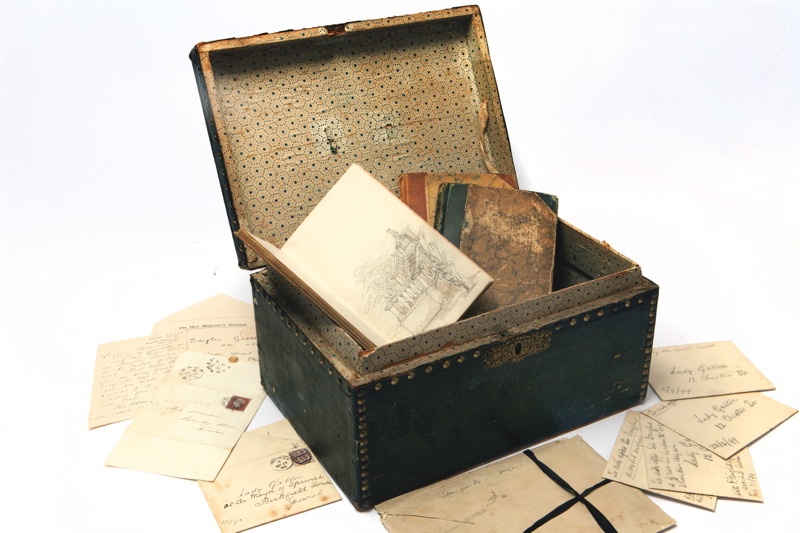When the owners of Trelissick House, then a private manor in Cornwall since taken on by the National Trust, called Stephanie Davies in 2011 and asked her whether she’d like to rummage round their attic, she could hardly say no but she didn’t expect to find real treasure.
As curator of Lotherton Hall in Leeds she knew of the connection between the two houses – the two daughters of Florence Nightingale’s cousin Marianne Nicholson had lived at the Leeds and Cornwall addresses. There she stumbled upon a keepsake box stuffed full of Marianne’s sketches, trinkets and never-before-seen correspondence between the beloved cousins.
“It’s just crazy, and all from an attic,” Davies says. “I thought, this can’t be locked away, everyone needs to see this stuff.”
The resulting exhibition, Our Cousin Florence, includes these fascinating items alongside Victorian fashions, similar to those that Florence and her cousins would have worn as depicted in their sketches, and in stark contrast with the clothing worn by female nurses during the Crimean War, with which Nightingale is usually associated.
“This isn’t necessarily about Florence as a nurse, it’s about Florence the young woman and how she became the Florence Nightingale we know and love today,” Davies explains. “Marianne was the opposite of Florence, she wanted to be the typical Victorian wife – entertain and live the Victorian dream – whereas Florence used to look out and see people around her suffering. She was a very committed Christian and she felt that she was called to do something about this.”
Nightingale resisted the draw of society balls and the associated ‘forced idleness’ expected of a woman of her standing and instead went on to introduce professional nurses into workhouse infirmaries, advocate hunger relief abroad, help abolish harsh prostitution laws and expand the female presence in the workforce, alongside her writing and own nursing career.
“Marianne tried to get Florence to marry her eldest brother Henry but Florence, even though she really loved him, didn’t want to. She felt that as soon as she got married she couldn’t do everything she wanted to do,” Davies says. Indeed, among more worthy writings of social reform and ideas for an early version of the NHS, Davies found a list of pros and cons Florence made after a proposal from another suitor, Richard Monckton Milnes, the cons of course coming out top.
“She refused Henry three times so he went off to Spain to heal his broken heart and died in a tragic accident. Marianne blamed Florence for this.” It was Nicholson’s marriage to Nightingale’s friend and colleague Sir Douglas Galton, who with Nightingale helped design Leeds Infirmary, which brought them back together.
“The letters are fascinating, to see this other side of her,” says Davies who explains she used to be homeless. “When I saw these letters it rang with me. I thought if I could do an exhibition that would encourage people like me to realise they’re valued, then great. Florence could have had a life of plenty but decided that helping her fellow man was what life was really about.”
Our Cousin Florence is at Lotherton Hall, Leeds, 18 March-31 December
Like the Big Issue North on Facebook




Leave a reply
Your email address will not be published.